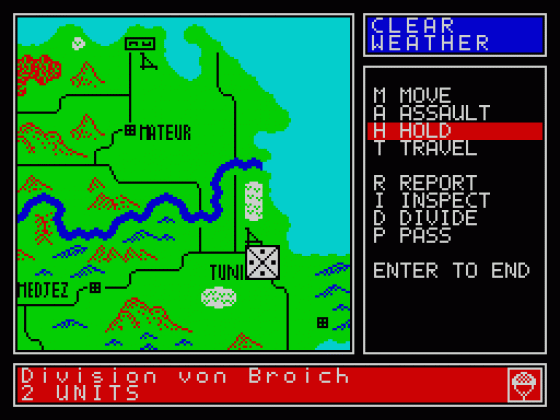Other Reviews Of Vulcan: The Tunisian Campaign For The Spectrum 48K/128K
Vulcan (Cases)
A review
Vulcan (Cases)
A review by Gwyn Hughes (Your Sinclair)
Wargames (Cases)
Gordon Hamlett reports from the front...
Vulcan: The Tunisian Campaign (Cases)
A review by Gary Rook (Sinclair User)


 1st August 1987
1st August 1987


